How to choose ballistic glasses?

Whether you're a casual shooter, law enforcement officer, or military service member, eye injuries from high-velocity projectiles are an ever-present risk. Fortunately, however, with a little ballistic protection, you can mitigate and even eliminate these dangers altogether.
In this guide, we cover everything you need to know about choosing the right pair of goggles or ballistic goggles. From military and civilian safety standards to ballistic safety eyewear specifications and more, we have the information you need to stay safe in the field.
Types of ballistic glasses
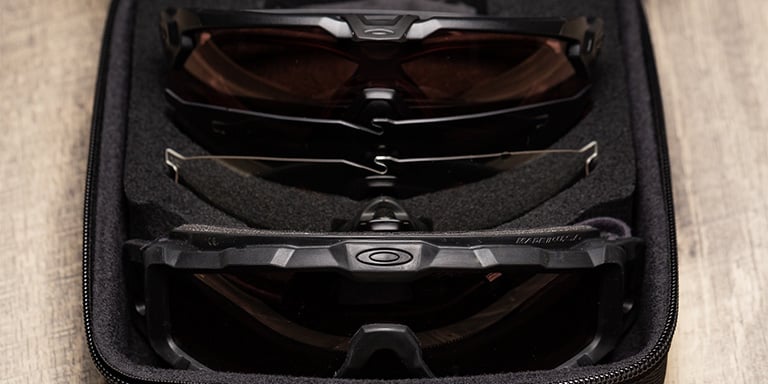
There are three types of ballistic safety glasses: safety glasses, shooting glasses, and goggles. The type you need usually depends on what you're doing; a casual shooter may only need a simple pair of safety goggles (although many shooters opt for extended ballistic sunglasses to stay safe), while a soldier in combat may need a pair of very resistant ballistic glasses. Either way, the eyewear must meet or exceed certain protection standards to qualify for a ballistic safety rating.
Ballistic Eyewear Protection Standards
There are three different standards that determine the effectiveness of ballistic goggles. The first is the American civil standard, ANSI Z87.1. Next come the US military standards MIL-PRF and MIL-DTL. Finally, there is the European standard, EN166, 169, 170 and 172.

Discover our RAPTOR ballistic goggles >>
ANSI Z87.1
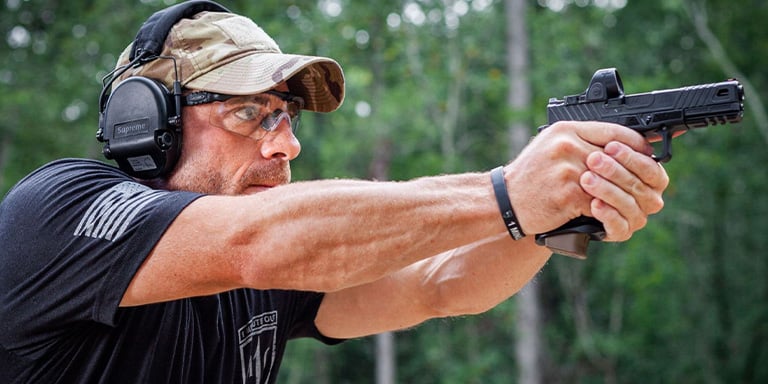
ANSI Z87.1 eyewear protection standards establish safety thresholds for worksite safety glasses and goggles, shooting glasses, and other non-military eyewear requiring official protection ratings (although the U.S. military defers to ANSI Z87.1 safety standards in some cases). The ANSI Z87.1 standard covers many aspects of eyewear safety, but the most important protective feature it addresses is impact protection.
To qualify for an ANSI Z87.1 impact protection safety rating, the tested eyewear lenses must protect against a ¼″ steel ball traveling at 150 feet per second (that's just over 100 miles per hour). Masks and goggles that qualify for this classification will carry a “Z87+” stamp. Eyewear that meets other ANSI safety standards but does not qualify for impact protection will be stamped "Z87" (without the plus sign).
Here is a list of ANSI Z87.1 protection labels:
| Label | The description |
|---|---|
| Z87+ | Shock protection |
| Z87-2 | Prescription Eyewear Compatibility |
| D3 | Protection against splashes and droplets |
| D4 | Protection against dust particles |
| D5 | Protection against fine dust |
| O | Welding protection (with a number between 1.3 and 14) |
| you | Protection against UV light (with a number between 2 and 6) |
| R | Protection against infrared light (with a number between 1.3 and 10) |
| I | Anti-glare filtering (with a number between 1.3 and 10) |
| S | Special lens tint |
| V | Photochromic (transition) lenses |
| H |
Indicates glasses designed for small heads |
MIL-PRF and MIL-DTL
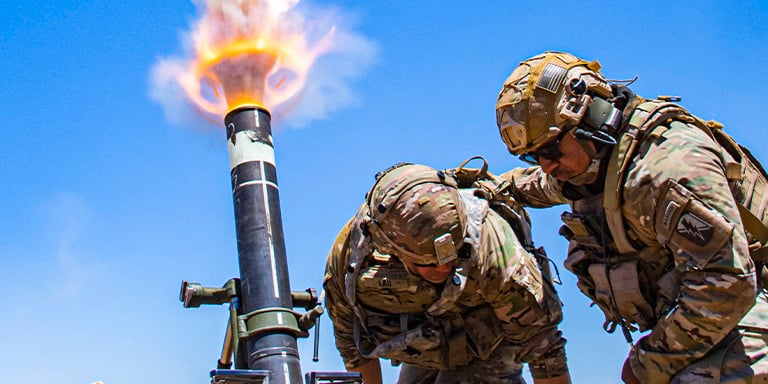
The US military ballistic protection standards MIL-PRF-31013 and MIL-DTL-43511D establish safety thresholds for goggles and masks respectively. Like ANSI Z87, both standards cover a range of safety features, including UV protection, chemical resistances, light transmission levels and temperature stability. The most important feature, however, is impact resistance.
MIL-PRF-31013 maintains that military safety glasses must be able to withstand a .15 caliber projectile traveling at 640 feet per second (or approximately 435 miles per hour). The MIL-DTL-43511D standard states that the scopes must be able to withstand a .22 caliber projectile at 560 feet per second (or just over 380 miles per hour). These standards are much more stringent than ANSI Z87.1, which should come as no surprise; military personnel tend to encounter much faster and more dangerous projectiles.
Additional military eyewear rules state that eyewear and goggles must not have any shiny or distracting colors or designs, must be capable of being sanitized, must be reasonably comfortable, and generally functional in the field.
Military Combat Eye Protection (MCEP) and Approved Protective Eyewear List (APEL)
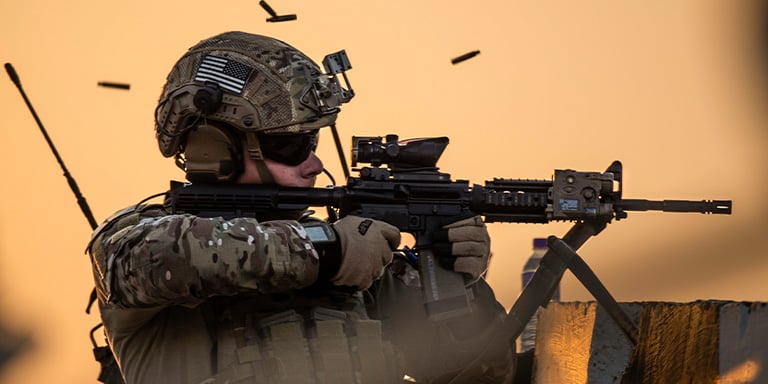
To make it easier for men and women to find eyewear that meets strict military safety standards, the military has its own list of approved safety eyewear called the Authorized Protective Eyewear List, or APEL. APEL eyewear is tested and chosen by the Military Combat Eye Protection (MCEP) program.
Eyewear on this list must meet ANSI Z87.1 protection standards, as well as the standards set forth in MIL-PRF-31013 (for eyewear) and MIL-DTL-43511D (for eyewear). Approved eyewear usually bears an APEL stamp directly on the lenses or frames to make them easily identifiable .
Characteristics of ballistic glasses
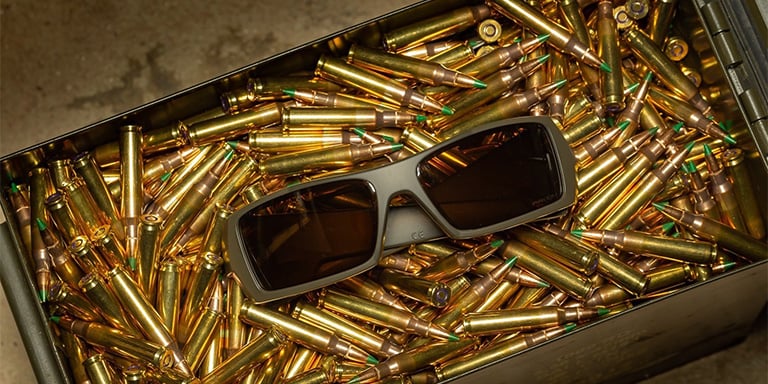
While impact protection is arguably the most important aspect of choosing ballistic safety eyewear, there are a host of other considerations to take into account when trying to find the right pair of goggles or goggles. . Here are some common features to look out for when buying ballistic goggles.
Anti-scratch coatings
To ensure they don't shatter, ballistic eyeglass lenses are typically made from polycarbonate (a thermoplastic polymer) rather than glass. Polycarbonate scratches much more easily than glass, and scratches can compromise vision in life-threatening situations. An anti-scratch coating does not completely eliminate the possibility of scratched lenses, but it does harden the polycarbonate to increase its longevity and overall scratch resistance.
Anti-fog coatings
If you wear prescription glasses every day, you understand how annoying it can be when your lenses fog up. For law enforcement officials and military personnel, however, this problem goes beyond mere annoyance and can become life-threatening. An anti-fog chemical coating can help solve the problem and keep your vision clear at all times.
UV protection
Everyone knows how harmful UVA, UVB and UVC rays can be to your skin. Long-term exposure to these rays also affects your eyes. If you're out in the sun a lot, consider a pair of tactical sunglasses or goggles that provide UV protection.
Compatibility of corrective lenses
If your vision is particularly poor, it is very important to ensure that your ballistic glasses are compatible with corrective lenses. Many styles of goggles and goggles offer this feature, and the Army APEL list even has options that are compatible with prescription lenses.
Lens color
The lens color of your ballistic goggles is much more complex than you might think. Different colors allow different amounts of light to pass through the lenses, which can potentially affect optical clarity or how you perceive certain colors and contrasts; this is called visual light transmission, or VLT. In general, lenses with low light transmission are better for bright conditions, while lenses with higher light transition are better for darker conditions. Here is the spectrum of color options available in ballistic goggles, the situations they are best suited for, and the amount of visible light transmission they allow.
brown lentils
brown work well in fields and other open areas. They help highlight brown hues and other earthy tones, and they provide good contrast against orange targets, which can be useful when training.
Visual light transmission: 35% to 45%
Gray
Gray is a good all-purpose lens color option. Gray lenses don't offer much color contrast or extra clarity, but they help reduce the amount of ambient light around you to create a feeling of depth and contrast.
Visual light transmission: 50%
Blue
Blue lenses provide very high contrast against green backgrounds; this contrast can be especially useful in areas with dense foliage. The only downside to blue lenses is that they aren't very effective when it's particularly bright.
Visual light transmission: 45% to 55%
Purple
Like blue lenses, violet lenses work well in green environments. They contrast well with blue, which can be useful for skeet shooters or anyone else with an eye to the sky.
Visual light transmission: 30% to 65%
Amber/Red
These lenses work great on hazy, cloudy and foggy days. They cut out green and blue backgrounds and enhance orange and red targets, much like brown lenses do.
Visual light transmission: 50% to 60%
Orange
Orange lenses work well in bright light to filter out blue tints and reduce glare. Like red and brown lentils, they do a good job of showcasing orange and red. They can also increase depth perception and contrast.
Visual light transmission: 70% to 80%
YELLOW
Perhaps the most popular color for target shooters, yellow lenses promote high contrast between orange targets. Like orange lenses, yellow lenses filter blue light very effectively.
Visual light transmission: 80% to 90%
Clear, untinted lenses are suitable for low-light and bright conditions . Other than a level of ballistic protection, clear lenses don't offer many additional visual benefits.
Visual light transmission: 100%
Polarized lenses
Reflected light and glare can be especially hard on the eyes. Polarized lenses use a special chemical coating to block this reflected light, eliminating glare. Be careful when choosing polarized lenses, they have their advantages, but also their disadvantages.
In marine or winter environments, polarized lenses can provide much-needed glare protection. However, polarized lenses are thin, which can compromise the level of ballistic protection they provide. From certain angles, they can also cause LED screens to distort or even disappear completely, which can be dangerous for pilots looking at instrument panels (or anyone else whose job or duties involve looking at an electronic screen). ).
Ballistic Eyewear Fitting Tips
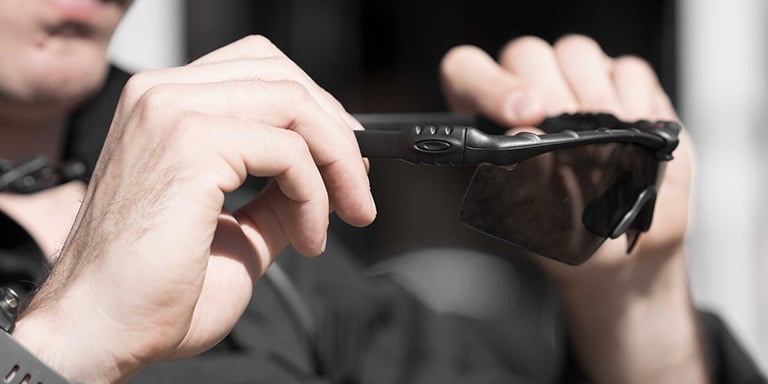
Finally, after finding the right pair of ballistic goggles, you need to make sure they fit properly. Follow these tips to make sure the glasses or goggles you choose fit properly:
- The weight of your ballistic goggles should be evenly distributed between your ears and nose
- The frame should fit your ears and nose comfortably without rubbing or pinching
- Your eyelashes should not come into contact with the lenses or frames of your glasses
- If you need to make slight adjustments and your glasses frames are metal, you can do so by bending them slightly at the temples or bridge
- If the plastic nose pads don't fit properly, you may be able to adjust them as well.
Choosing the right pair of ballistic goggles basically boils down to what's right for you. If you are a civilian shooter, ANSI Z87 approved goggles and goggles provide you with impact protection. If you are in the military, be sure to meet the protection standards outlined in MIL-PRF and MIL-DTL. From there, there are plenty of other options and safety features to choose from to protect your eyes and keep you safe.
0 comments